The Urals Region: Folklore and Malachite Casket tales by Pavel Bazhov
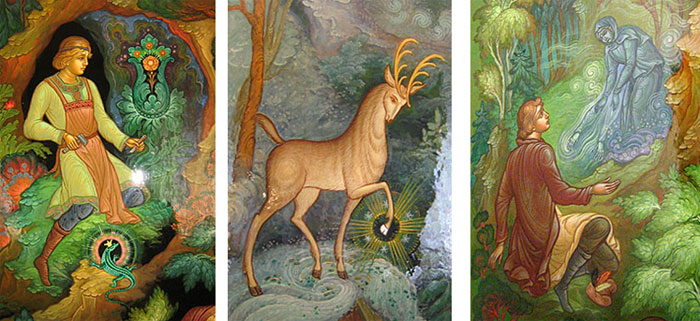
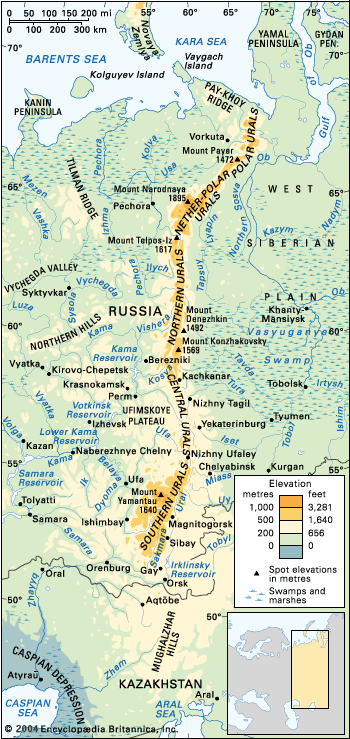
In 1939 Pavel Bazhov, a writer native to the Ural Mountains region of Russia, published his book of fairy tales titled “Malachite Casket: Tales from the Urals”. His tales were inspired by the oral lore of the miners and gold prospectors in the Urals, folklore poetic motifs and the beauty of the contemporary authentic language. The plot was built around villagers’ lives in a valley of a mountain, which was rich in gemstones, copper, gold and other natural jewels.
Since ancient times, people formed the notion that underground wealth of Earth is guarded by miraculous creatures. In the world of folklore, the custodians of the bowels act in the guise of a Mountain Spirit, an Old Man, a Queen, or a Mistress, Cave Giants, Dwarfs, etc. Their actions can be both hostile and benevolent towards the humans. Such fantastic legends were widely spread among the Ural workers.
In his Tales from the Urals, Bazhov blends elements of the everyday life with the fantasy characters.
Who were the Ural workers?

Let’s take a quick look into the history of this territory.
The indigenous people of this region were mostly Mansi, Khanty, and Bashkirs.
The first mention of Russians in the mountains to the east of the East European Plain was in 1096. Within the next couple of centuries, Novgorodians were involved in trading fur with the local population. They collected tribute from Yugra and Great Perm, slowly moving towards the South and occupying new territories. By the end of XVI century Russians captured most of the low populated Ural region. Between 1558 and 1574 tsar Ivan the Terrible granted by several decrees the upper reaches of the rivers Kama and Chusovaya in the Middle Ural to the merchant family Stroganov. The Stroganov’s land, then unexplored, provided the staging ground for Cossack Yermak’s expedition and incursion into Siberia.
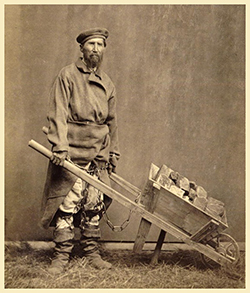
Photo by A. K. Kuznetsov (1845-1928)
The exploration and development of new lands required significant resources: not only financial but also human. As a measure of punishment, the forced punitive labor for the benefit of the treasury combined with an exile was known since ancient times. However, only in the era of modern history, it received a world-wide spread as a mean of forced labor to the development of new territories. The first exile settlers arrived in Siberia in 1593, and the 300-years history of “katorga” was launched. The Russian word “katorga” comes from medieval Greek “katergon” – galley, and is defined as a form of criminal punishment where convicts’ heavy forced labor in remote places was used in conjunction with a particularly harsh regime of detention.
In 1753, the death penalty was abolished in Russia. The criminals were sentenced to a permanent settlement in Siberia and harsh labor. By that time, the tsar’s government had shown attention to the rich deposits of minerals in the Ural Mountains and opportunities for agricultural development in Siberia. A series of decrees provided for an exile of the prisoners from the Russian prisons to these regions.
The work in the mines was a hellish labor. During the summer months in the Ural Mountains air warmed up to 65°F-77°F (18°C-25°C), but it’s never above 50°F (10°C) inside a mine. The miners often worked knee-deep in the water. The average life expectancy for a miner was 26-28 years, and rarely miners lived to 30-35 years.
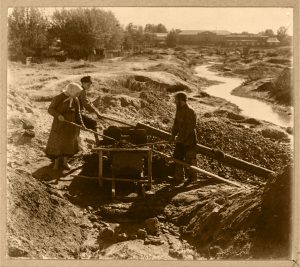
Along with the deposits of gemstones, gold ores and gold-bearing sands were discovered near the city of Yekaterinburg. The metallurgical industry has been rapidly growing. There was an acute shortage of labor. To fulfill the need, the government attributed peasants to plants and mines in the Urals. During off-season periods for the agricultural work, forcefully assigned peasants were obliged to work in a state or private manufactories instead of paying tax in goods or money. Women and children aged ten years old or older worked limited jobs. Soldiers after 25 years of active service were sent to live and work in this developing region.
Thus, a large part of the population in the Urals in XVIII century was convicts, retired soldiers, runaway and forcefully assigned peasants. Most of the miners, plant- and other mining-related workers were harshly exploited. They were illiterate, or in the best case scenario had basic reading & writing ability. They were tough and had earnest survival skills, and yet they were humans. Like every human being, they experienced love and passion, admired beauty, had dreams and desire for a better life.
All three painting are made by Russian artist Victor Korolkov
Workers’ Folklore
Imagination, creativity, and humor are the best helpers in overcoming any hardship. The first known workers’ folklore is attributed to these times. In their songs, poems, and tales, people spoke about their disenfranchised life, unreasonably hard work, of unbearable exploitation. However, their stories were sprinkled with humor, warmed with love, and sparkled with beauty.
The harsh climate of Urals and its untamed wild nature led to the revival of pagan beliefs. The old workers were the keepers of the folk legends and beliefs. All, who worked closely with nature were looking for the explanation of the underground natural treasure in this region. These people created more legends, which expressed their deep and unconditional love to the motherland.
The dreams of the pioneer miners turned into treasure-hunting tales. These tales spoke about already discovered wealth of the Mother Earth, but even more so, they spoke of the hidden treasures, guarded by the secret powers and mysterious inhabitants of the mountains, such as Azovka-girl, malachite goddess “Malachitnitsa”, a giant serpent Poloz (Crawler) and his daughters Zmeyevkas (little snakes). In the legends, these hosts of the mountains would help selected humans by giving a hint on a location of rare crystals, copper or gold. The incredibly gifted carvers, masters who knew “the secret” also found their voice in these tales. These folktales and legends were carefully kept in the working families and mindfully transferred from one generation to another.
Pavel Bazhov

Pavel Petrovich Bazhov was born in 1879 in the Ural city of Sysert. His father Peter Bazhov was a master in the welding shop of the Sysert Steel Plant. As a little boy, Pavel loved listening to the stories about the arcane powers, told by elders. After completing basic school education, he studied in the Orthodox Theological Seminary in Perm, and worked as a teacher of Russian language in seminaries of Yekaterinburg and its satellite cities.
For 15 years, every year during the school vacation Bazhov traveled his homeland on foot, observing and carefully studying work of stone cutters, foundry workers, gunsmiths and many other Ural masters. He spoke with them about their work, the secrets of their exceptional mastery, their life, about their joys and sorrows. Bazhov kept notes on everything he heard: whether truth or fable, an authentic story or a folk legend.
“Malachite Casket”
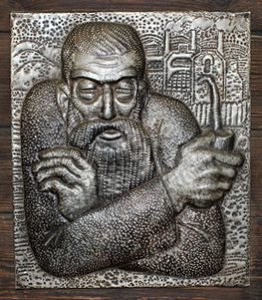
The first edition of the “Malachite Casket” P. Bazhov published in 1939. He introduced his initial 14 tales to his readers as his childhood memories from the stories told by grandpa Slyshko. The real-life prototype of the grandpa Slyshko was an old worker of the Polevskoy copper-smelting plant Vasiliy Khmelinin. Despite having a prototype, grandpa Slyshko resembled a character of a Storyteller Bayan from many folk-tales, and at the same time, he represented the author himself. Even though Bazhov used the scenes and some characters from the folk-tales, his tales were true artwork in his authorship. His beautiful authentic language abounded in the words of local dialects.
The Mistress of the Copper Mountain is the central piece of the Tales from the Urals.
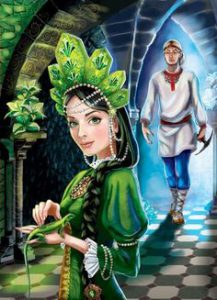 The Mistress of the Copper Mountain is the spirit and goddess of the mountains. She represents Mother Earth herself and impersonates Destiny. In the Bazhov’s tale, sometimes she appears to humans as a little green lizard with a crown on her head, and other times – as a gorgeous young woman with a thick black braid in a silky malachite dress. The Malachite Lady rules her kingdom and protects her underground treasure. She does not interfere with the villagers unless humans misbehave and disobey her rules while on her territory.
The Mistress of the Copper Mountain is the spirit and goddess of the mountains. She represents Mother Earth herself and impersonates Destiny. In the Bazhov’s tale, sometimes she appears to humans as a little green lizard with a crown on her head, and other times – as a gorgeous young woman with a thick black braid in a silky malachite dress. The Malachite Lady rules her kingdom and protects her underground treasure. She does not interfere with the villagers unless humans misbehave and disobey her rules while on her territory.
She is beautiful and fair. And yet, the miners and stone cutters are fearful of her. Why is that? Bazhov draws an ambiguous image of the Mistress. She calls herself a “stone girl” emphasizing her cool and passionless essence. The Mistress of the Copper Mountain is majestic and proud, sometimes has a harsh temper and other times – cold calmness. She is just, but not merciful.
And yet, at times this “stone girl” can be sensitive and emotional like any ordinary human. She likes the young master Stepan, and in a certain circumstance, she’d marry him. In his presence, she is flirty and joyful. Bazhov endows her with some human weaknesses and allows her to be mildly jealous.
None of the men who meet the Malachite Lady lives a happy life ever after. Nobody wants to anger the Mistress; nobody wants to fall into disgrace with her. And even those whom the Mistress favors and accepts kindly, would not find happiness after meeting her. She attracts men with her delicate understanding of the beauty and her wisdom in creating it. She confuses men, leads a new way, alters their destiny. Stepan didn’t fall for the Malachite Lady’s wealth and her gorgeous look; he stayed true to his fiancée. But, he could never forget the Mistress either. He married his lovely fiancee Nastasia. They had three adorable kids. He built a new house for his family, which he could afford by virtue of an incredible personal luck in the mine. Still, something was always missing in his life with his lovely family. Stepan wasn’t happy. With each passing day, he became sadder and sadder and soon withered completely.
In the character of the Mistress of the Copper Mountain Bazhov embodies controversial qualities. She is a queen, she is a beauty, she is a temptress… She is a guardian, she is a giver and a helper. Bazhov concludes his first tale with the words, which in a rough translation mean: “That’s what she is like, the Mistress of the Copper Mountain! A bad man meets her for grief, and a good one finds no happiness either.”
Publications and influence.
In 1943, four stories from “The Malachite Casket” were translated to English and French and published in Moscow magazine Internatsionalnaya Literatura (International Literature). Alan Moray Williams translated the whole book into English, and it was published by Hutchinson in 1944.
In 1946 Mosfilm Studios released “The Stone Flower” movie. The full version with English subtitles is available on YouTube. (You’d need to select English subtitles in the “Settings” of the video under the gear icon)
Inspired by Bazhov’s Tales from the Urals, Sergei Prokofiev composed his ballet in 4 acts. The premiere of the ballet “Tale of a Stone Flower” took place on February 12, 1954, in Moscow at the Bolshoi Theater of the USSR. The second edition of the ballet was titled “The Stone Flower”, repeating exactly the name of one of the tales in “The Malachite Casket” book. This new version of the ballet was produced by Yuri Grigorovich and Alla Shelest, and had only 3 acts. It was played in Kirov Theater (now Mariinsky) in Leningrad (now St. Petersburg) on April 22, 1957.
S. Prokofiev composed the music rather quickly. He started his work on September 18, 1948. By the end of 1949, he completed the clavier, and the administration of the Bolshoi Theater approved the ballet. However, the work on the production started only four years later. During this time Prokofiev fully rewrote some parts of his original composition. The Bolshoi Theater held the first rehearsal on March 1, 1953.
Sergei Prokofiev passed away on the evening of March 5, 1953. On the day of his death, he worked on the orchestration of a new scene of “The Stone Flower”.
Urals’ jewels are Russian love and pride.
History, traditions, and folklore of the Urals have been an organic component of the Russian culture. Even before the World Wide Web erased the distances, and while Russian Federation was still a part of the even bigger country – USSR, children in all regions of this huge country grew up reading Bazhov’s tales, women of all ages owned jewelry, jewelry boxes, and figurines from the Ural Mountains, geological museums in different parts of the Soviet Union displayed and explained crystals and gold nuggets from Ural region, people in big cities watched the ballet and listened to “The Stone Flower” music composed by Sergei Prokofiev. Natural resources of the Ural Mountains made this region of Russia well-known to the world, and Russian stone cutters were acknowledged as the best masters. Their artworks were and still are known and valued. France, Italy, Mexico, United States and other countries keep Russian unique gemstone works of art in their museums and cathedrals.
Ural Mountains region, its history, people, folklore, and tales are very exciting topics for me: the more I write, the more fascinating stories come to mind. I have to stop somewhere. I am sure that I will return to this theme and tell you more about Russian art of semi-precious stones and its unique pieces and collections stored in the different parts of the world.
Please let me know in the comments below if you enjoyed this reading and learned something new and interesting from this article. Share your thoughts and ask questions. I’d appreciate your feedback and would love to engage in a conversation.
~ Julia
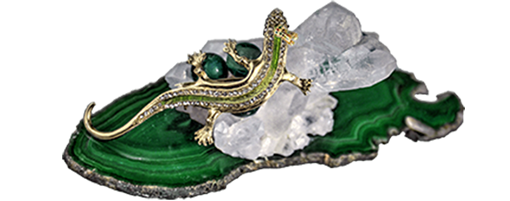

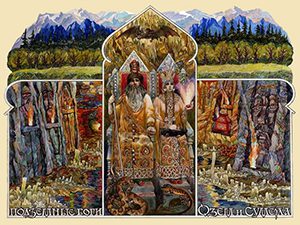
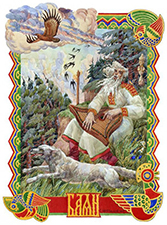
I must have been really lucky to buck up on this article, this is the kind of stuff I’m interested in.
First off I would like to know how you became interested in gemstones?
I had no idea that convicts providing free labour as a part of their punishment went that far back .
I really enjoyed this, the Mistress of the Copper Mountain sounds like a good read.
Nice article
Hello Aldane,
Thank you so much for your feedback.
I don’t even remember how I became interested in gemstones, because it happened before I could remember myself. 🙂 Gemstones carving art and jewelry were an integral part of the Russian culture. I was born in St. Petersburg, Russia. My city was built by tsar Peter the Great in 1703, who made it the Capital of Russia for the next two centuries. In 18th century mining in Urals was at culmination of its development. Gold and semi-precious stones from Urals were mostly used to decorate tsar’s Winter Palace in St. Petersburg. After Socialist revolution of 1917, the Winter Palace became a Hermitage Museum. I grew up visiting this museum and walking huge halls with the marble stairs, walls faced in malachite, and furniture inlaid with jasper. Semi-precious stone jewelry was very popular, and every woman, including my mother and grandmother, owned several pieces. Our parents read to us Bazhov’s tales, we watched movie and cartoons based on the tales from this book, and we all remember Mistress of the Copper Mountain since we remember ourselves. The book and its title were first translated to English back in 1944 as The Mistress of the Copper Mountain. In today’s English, I’d say that the closer translation would be Hostess or Queen of the Copper Mountain as well as the malachite casket today would probably be called a malachite jewelry box.
Yes, Russia always was a harsh country – no matter who ruled it. “Katorga” was the worst form of punishment.
Thank you again for your comment. Come back to read more as I publish new articles every week.
All the best,
~ Julia
Thanks for that article about Urals
Not often you can find something about that region of Russia
Who loves a gemstones highly recommend to visit Yekaterinburg with his Mineralogy and Stone-Cutting and Jeweler Art museums
Dear Alexander.
Thank you for your comment and your advice to visit the Mineralogy museum & Museum of Stone-Cutting and Jewelry Art in Yekaterinburg. I’m sure that both museums are incredible and worth seeing! Unfortunately, this is not the best time for travels to Russia.